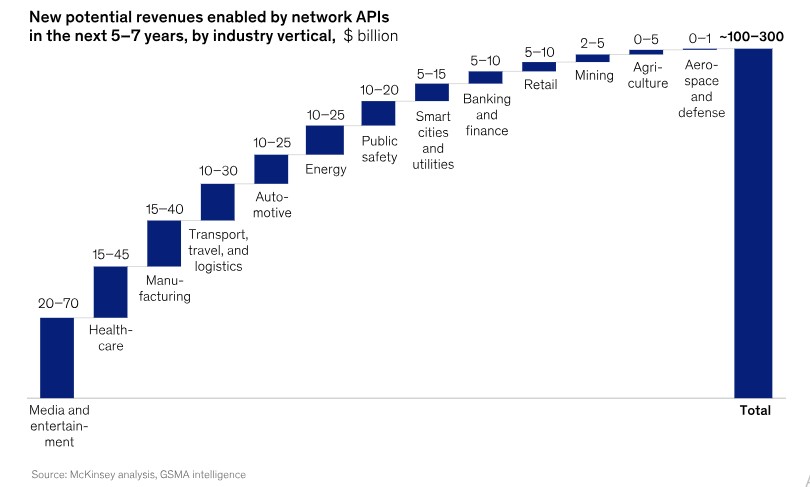From AI-driven automation to blockchain-supported systems, the enterprise business landscape is rapidly evolving. Furthermore, emerging cutting-edge technologies promise to support entrepreneurial possibilities through groundbreaking solutions for various industry challenges.
As such, the ICT industry is poised to benefit from these transformative business activities fueled by the acceleration of digital solutions. The Global Mobile Economy Development Report 2024 released by GSMA Intelligence shows that by the end of 2023, the number of global mobile users exceeded 5.4 billion. Moreover, the mobile ecosystem supported 16 million jobs directly and 12 million jobs indirectly.
Telecom companies are at the forefront of exploring the commercial opportunities within the digital economy landscape. Defending market share in traditional communications and capturing growth in adjacent services is now a common strategy and a challenge for major operators.
Global Interconnection Opportunities
Global interconnectivity has presented new opportunities for internet users, hyperscalers, content delivery networks (CDNs), video streaming and gaming platforms, and financial services providers.
Acting as an ICT bridge between the Middle East, Asia, and Europe, e& recently partnered with Cato Networks to establish a new Point-of-Presence (PoP) at the global technology group's SmartHub Data Centre.
As one of the UAE's premier carrier-neutral data facilities, e&’s SmartHub will serve as a crucial platform for Cato Networks' business customers, enabling them to access enhanced interconnectivity and Secure Access Service Edge (SASE) technology. The SmartHub offers a community-based ecosystem with reliable caching servers and edge nodes and serves internet users, hyperscalers, content delivery networks (CDNs), video streaming and gaming platforms, and financial services providers.
Read More: e&, Cato Networks Boost Next-Gen Connectivity and SASE Capabilities with SmartHub
Similarly, Salam announced a strategic partnership with the Global Cloud Xchange (GCX) to inaugurate the Saudi Transit Corridor. This new venture is set to revolutionize connectivity between Asia and Europe, showcasing a significant leap in global telecommunications infrastructure. The corridor will provide diverse, hybrid subsea and terrestrial connectivity routes, leveraging both Salam’s extensive terrestrial network across Saudi Arabia and GCX’s robust multiple cable systems.
Read More: Salam and GCX Partner to Launch Saudi Transit Corridor
Harnessing APIs
As network operators seek ways to remain profitable in a fiercely competitive telecom market, network application programming interfaces (APIs) can serve as the platform for telcos to drive 5G monetization from their network investments. However, telcos will need to work well together to build the market by creating a solid supply of fully-interoperable APIs and generating global demand and momentum.
Moreover, ‘Open APIs’ are gaining interest among service providers. This initiative provides a flexible integration among operations and management systems, making it easier to collaborate across multiple providers and third parties.
Telecom Review Exclusive Interview: Transforming UAE Telecoms Through Cloud Security and Open Standards
Network APIs allow enterprises to tap into 5G capabilities to limit fraud, guarantee bandwidth for mission-critical applications, and enable real-time interactions and insights. To that end, Nokia’s API offering, Network as Code, and developer portal enables application developers and communication service providers (CSPs) to expedite the development of software applications for diverse enterprise, industrial, and consumer scenarios. Moreover, this platform facilitates the monetization of 5G and 4G network assets beyond simple connectivity.
Nokia’s Network as Code platform is based on a revenue-share model between developers, CSPs, and Nokia as the platform provider.
Read More: Nokia's Network as Code Platform Drives Network Programmability and Monetization
Internet of Things
In an era where technological advancements are rapidly reshaping our world, telcos hold the potential to take advantage of Internet of Things (IoT) solutions. The convergence of IT systems with operational technology systems opens a range of new industrial IoT use cases. Growing demands from emerging use cases like mobility and Industry 4.0 are fueling enterprise needs for solutions that can effectively connect and manage a rapidly expanding array of devices and sensors.
However, despite its potential, IoT is still in its infancy stages of development. Industry experts estimate that as 5G and security technologies mature, coupled with the growing demand for mobility, IoT has the potential to scale up significantly. This growth will likely be facilitated by B2B operators implementing selective vertical approaches and fostering ecosystems conducive to IoT expansion.
With global trends emphasizing sustainable and autonomous operations, the future of IoT technology is proving to be dynamic and promising.
The world is experiencing a significant transformation and IoT will play a crucial role in this transformation. The future will be based on various innovative technologies such as IoT cybersecurity, air monitoring systems, artificial intelligence (AI), natural disaster predictions, smart farming, healthcare, smart cities and other next-gen experiences for users. Furthermore, advancements in the glasses-free 3D industry promise to provide an unparalleled visual experience.
Read More: The Future of Connectivity: Strategies for Direct IoT Implementation in KSA
Hybrid Cloud Solutions
Network operators can empower customers with hybrid cloud solutions that blend technological advances with business insights to create strategies that support their broader business objectives. Moreover, CSPs can collaborate with industry partners to streamlining network Infrastructure across multiple platforms, improve DNS reliability in cloud-native settings, reducing latency and enhancing network reliability by integrating a robust DNS solution across multi-cloud environments, including AWS and Microsoft Azure, and so on.
For instance, du is supporting the Commercial Bank of Dubai’s (CBD) hybrid cloud journey by hosting the HPE GreenLake platform at its hyper-connected, Tier III Certified data centers, ensuring reliable connectivity and network security services.
Latest News: du Supports CBD’s Hybrid Cloud Transformation
Broadcast Industry
The broadcast industry is currently witnessing a significant demand for new broadcasting technologies such as IPTV, web TV, high-definition television, and pay-per-view. The demand for enriched video experiences is expected to pave the way for broadcasters across the region.
The live production and broadcast landscape is undergoing significant changes. Consumers' demand for better-quality video and audio has driven rapid upgrades in broadcast equipment and technology. With content now produced in 4K, live-production technology must evolve in order to ensure enhanced viewing quality. Technological advancements have pushed broadcasters to offer ultra-high definition (UHD) output, fueling market growth.
Telecom Review Exclusive Insights: Next-Gen Government: How Generative AI is Changing the Citizen Experience
In Conclusion
With over 300 commercial 5G networks already deployed globally and advancements continuing, the transition from 5G to 5G-Advanced is poised to revolutionize network capabilities and user experiences. 5G laid the groundwork for faster speeds and more reliable connections and 5G-Advanced is set to push these boundaries further, offering significant enhancements in terms of network efficiency, coverage, and performance.
For operators, a significant opportunity lies in delivering tailored network capabilities through edge computing, private networks, and slicing to cater to diverse industries. However, implementing these advancements can be time-consuming as the technology reaches optimal maturity.
Notably, industry watchers point out that the competition between telcos and ICT companies will be intense. However, if the enterprise opportunity materializes at scale, all players, including operators, could become equitable partners of the growing revenue.
Latest Insights: The Importance of Spectrum: Trends to Watch in 2024










